Alphonse Gabriel "Al" Capone Janurary 17, 1899 – January 25, 1947) was an American gangster who attained fame during the Prohibition era as the co-founder and boss of the Chicago Outfit
Al Capone
Alphonse Gabriel "Al" Capone Janurary 17, 1899 – January 25, 1947) was an American gangster who attained fame during the Prohibition era as the co-founder and boss of the Chicago Outfit. His seven-year reign as crime boss ended when he was 33 years old.
Capone was born in the borough of Brooklyn in New York City to Italian immigrants. He was considered a Five Points Gang member who became a bouncer in organized crime premises such as brothels. In his early twenties, he moved to Chicago and became bodyguard and trusted factotum for Johnny Torrio, head of a criminal syndicate that illegally supplied alcohol—the forerunner of the Outfit—and that was politically protected through the Unione Siciliana. A conflict with the North Side Gang was instrumental in Capone's rise and fall. Torrio went into retirement after North Side gunmen almost killed him, handing control to Capone. Capone expanded the bootlegging business through increasingly violent means, but his mutually profitable relationships with mayor William Hale Thompson and the city's police meant that Capone seemed safe from law enforcement.
Capone apparently reveled in attention, such as the cheers from spectators when he appeared at ball games. He made donations to various charities and was viewed by many to be a "modern-day Robin Hood". However, the Saint Valentine's Day Massacre of gang rivals, resulting in the killing of seven men in broad daylight, damaged Chicago's image—as well as Capone's—leading influential citizens to demand governmental action and newspapers to dub him "Public Enemy No. 1".
The federal authorities became intent on jailing Capone, and they prosecuted him for tax evasion in 1931, a federal crime and a novel strategy during the era. During the highly publicized case, the judge admitted as evidence Capone's admissions of his income and unpaid taxes during prior (and ultimately abortive) negotiations to pay the government any back taxes he owed. Capone was convicted and sentenced to 11 years in federal prison. After conviction, he replaced his old defense team with experts in tax law, and his grounds for appeal were strengthened by a Supreme Court ruling, but his appeal ultimately failed.
He was already showing signs of syphilitic dementia early in his sentence, and he became increasingly debilitated before being released after eight years. On January 25, 1947, Capone died of cardiac arrest after suffering a stroke.
Early life
Alphonse Gabriel Capone was born in the borough of Brooklyn in New York on January 17, 1899. His parents were Italian immigrants Gabriele Capone (December 12, 1865 – November 14, 1920) and Teresa Capone (née Raiola; December 28, 1867 – November 29, 1952). His father was a barber and his mother was a seamstress, both born in Angri, a town in the Province of Salerno.
Gabriele and Teresa had nine children: Alphonse "Al" Capone; Vincenzo Capone, who later changed his name to Richard Hart and became a Prohibition agent in Homer, Nebraska; Raffaele James Capone, AKA Ralph "Bottles" Capone, who took charge of his brother's beverage industry; Salvatore "Frank" Capone, Ermina Capone, who died at the age of one, Ermino "John" Capone, Albert Capone, Matthew Capone, and Mafalda Capone (who married John J. Maritote). Ralph and Frank worked with him in his criminal empire. Frank did so until his death on April 1, 1924. Ralph ran the bottling companies (both legal and illegal) early on, and was also the front man for the Chicago Outfit for some time until he was imprisoned for tax evasion in 1932.
The Capone family immigrated to the United States, first immigrating from Italy to Fiume, Austria-Hungary (present day Rijeka, Croatia) in 1893, traveling on a ship to the U.S., and finally settling at 95 Navy Street in the Navy Yard section of downtown Brooklyn. Gabriele Capone worked at a nearby barber shop at 29 Park Avenue. When Al was 11, the Capone family moved to 38 Garfield Place in Park Slope, Brooklyn.
Capone showed promise as a student, but had trouble with the rules at his strict parochial Catholic school. His schooling ended at the age of 14, after he was expelled for hitting a female teacher in the face. He worked at odd jobs around Brooklyn, including a candy store and a bowling alley. During this time, Capone was influenced by gangster Johnny Torrio, whom he came to regard as a mentor.
Criminal career
Capone initially became involved with small-time gangs that included the Junior Forty Thieves and the Bowery Boys. He then joined the Brooklyn Rippers, and then the powerful Five Points Gang based in Lower Manhattan. During this time, he was employed and mentored by fellow racketeer Frankie Yale, a bartender in a Coney Island dance hall and saloon called the Harvard Inn. Capone inadvertently insulted a woman while working the door at a Brooklyn night club and was slashed by her brother Frank Gallucio. The wounds led to the nickname that Capone loathed: "Scarface". Yale insisted that Capone apologize to Gallucio, and later Capone hired him as a bodyguard. When photographed, Capone hid the scarred left side of his face, saying that the injuries were war wounds. Capone was called "Snorky", a term for a sharp dresser, by his closest friends.
Marriage and family
Capone married Mae Josephine Coughlin on December 30, 1918 at age 19. She was Irish Catholic and, earlier that month, had given birth to their son Albert Francis "Sonny" Capone. Capone was under the age of 21, so his parents had to consent to the marriage in writing.
Chicago
At about 20 years of age, Capone left New York for Chicago at the invitation of Johnny Torrio, who was imported by crime boss James "Big Jim" Colosimo as an enforcer. Capone began in Chicago as a bouncer in a brothel, where he contracted syphilis. Timely use of Salvarsan probably could have cured the infection, but he apparently never sought treatment. In 1923, he purchased a small house at 7244 South Prairie Avenue in the Park Manor neighborhood on the city's south side for US$5,500. In the early years of the decade, Capone's name began appearing in newspaper sports pages, where he was described as a boxing promoter.
Chicago's location on Lake Michigan gave access to a vast inland territory, and it was well-served by railroads. Torrio took over Colosimo's crime empire after Colosimo's murder on May 11, 1920, in which Capone was suspected of being involved.
Torrio headed an essentially Italian organized crime group that was the biggest in the city, with Capone as his right-hand man. He was wary of being drawn into gang wars and tried to negotiate agreements over territory between rival crime groups. The smaller, mixed ethnicity, North Side Gang led by Dean O'Banion (also known as Dion O'Banion) came under pressure from the Genna brothers, who were allied with Torrio. O'Banion found that, for all Torrio's pretensions to be a settler of disputes, he was unhelpful with the encroachment of the Gennas into the North Side. In a fateful step, Torrio either arranged for or acquiesced to the murder of O'Banion at the latter's flower shop in October 1924. This placed Hymie Weiss at the head of the gang, backed by Vincent Drucci and Bugs Moran. Weiss had been a close friend of O'Banion, and the North Siders treated revenge on his killers as a priority.
In January 1925, Capone was ambushed, leaving him shaken, but unhurt. Twelve days later, Torrio was returning from a shopping trip when he was shot several times. After recovering, Torrio effectively resigned and handed control to Capone, age 26, who became the new boss of an organization that took in illegal breweries and a transportation network that reached to Canada, with political and law-enforcement protection. In turn, he was able to use more violence to increase revenue. Refusal by an establishment to purchase liquor from him often resulted in the premises being blown up. As many as 100 people were killed in such bombings during the 1920s. Rivals saw Capone as responsible for the proliferation of brothels in the city.
Capone indulged in custom suits, cigars, gourmet food and drink (his preferred liquor was Templeton Rye from Iowa , and female companionship. He was particularly known for his flamboyant and costly jewelry. His favorite responses to questions about his activities were: "I am just a businessman, giving the people what they want"; and, "All I do is satisfy a public demand." Capone had become a national celebrity and talking point.
Capone based himself in Cicero after using bribery and widespread intimidation to take over during elections for the town council. This made it difficult for the North Siders to target him. Capone's driver was found tortured and murdered, and there was an attempt on Weiss's life in the Chicago Loop. On September 20, 1926, the North Side Gang used a ploy outside the Capone headquarters at the Hawthorne Inn, aimed at drawing him to the windows. Gunmen in several cars then opened fire with Thompson submachine guns and shotguns at the windows of the first-floor restaurant. Capone was unhurt and called for a truce, but the negotiations fell through. Three weeks later, Weiss was killed outside the former O'Banion flower shop North Side headquarters. In January 1927, the Hawthorne's restaurant owner, a friend of Capone's, was kidnapped and killed by Moran and Drucci.
Capone became increasingly security-minded and desirous of getting away from Chicago. As a precaution, he and his entourage would often show up suddenly at one of Chicago's train depots and buy up an entire Pullman sleeper car on a night train to a place like Cleveland, Omaha, Kansas City, Little Rock, or Hot Springs, where they would spend a week in luxury hotel suites under assumed names. In 1928, Capone paid $40,000 to beer magnate August Busch for a 14-room retreat at 93 Palm Avenue on Palm Island, Florida, in Biscayne Bay between Miami and Miami Beach. Capone never registered any property under his name. He did not even have a bank account, but always used Western Union for cash delivery, not more than $1,000.
Political alliances
The protagonists of Chicago's politics had long been associated with questionable methods, and even newspaper circulation "wars", but the need for bootleggers to have protection in city hall introduced a far more serious level of violence and graft. Capone is generally seen as having an appreciable effect in bringing about the victories of Republican William Hale Thompson, especially in the 1927 mayoral race when Thompson campaigned for a wide open town, at one time hinting that he'd reopen illegal saloons. Such a proclamation helped his campaign gain the support of Capone, and he allegedly accepted a contribution of $250,000 from the gangster. In the 1927 mayoral race, Thompson beat William Emmett Dever by a relatively slim margin. Thompson's powerful Cook County political machine had drawn on the often-parochial Italian community, but this was in tension with his highly successful courting of African Americans.
Capone continued to back Thompson. Voting booths were targeted by Capone's bomber James Belcastro in the wards where Thompson's opponents were thought to have support, on the polling day of April 10, 1928, in the so-called Pineapple Primary, causing the deaths of at least 15 people. Belcastro was also accused of the murder of lawyer Octavius Granady, an African American who challenged Thompson's candidate for the African American vote, and was chased through the streets on polling day by cars of gunmen before being shot dead. Four policemen were among those charged along with Belcastro, but all charges were dropped after key witnesses recanted their statements. An indication of the attitude of local law enforcement to Capone's organization came in 1931 when Belcastro was wounded in a shooting; police suggested to skeptical journalists that Belcastro was an independent operator.
St. Valentines Massacre
The 1929 Saint Valentine's Day Massacre led to public disquiet about Thompson's alliance with Capone and was a factor in Anton J. Cermak winning the mayoral election on April 6, 1931.
Capone was widely assumed to have been responsible for ordering the 1929 Saint Valentine's Day Massacre in an attempt to kill Bugs Moran, the head of the North Side Gang. Moran was the last survivor of the main North Side gunmen; his succession had come about because his similarly aggressive predecessors Vincent Drucci and Hymie Weiss had been killed in the violence that followed the murder of original leader Dean O'Banion.
To monitor their targets' habits and movements, Capone's men rented an apartment across from the trucking warehouse and garage at 2122 North Clark Street that served as Moran headquarters. On the morning of Thursday, February 14, 1929, Capone's lookouts signaled gunmen disguised as police to start a "raid". The faux police lined the seven victims along a wall without a struggle, then signaled for accomplices with machine guns. The seven victims were machine-gunned and shot-gunned. Photos of the victims shocked the public and damaged Capone's reputation. Within days, Capone received a summons to testify before a Chicago grand jury on violations of the federal Prohibition Law, but he claimed to be too unwell to attend at that time.
Trials
Capone was arrested by FBI agents on March 27, 1929 as he left a Chicago courtroom after testifying to a grand jury investigating violations of federal prohibition laws, on charges of having committed contempt of court by feigning illness to avoid an earlier appearance. In May 1929, Capone was sentenced to a prison term in Philadelphia's Eastern State Penitentiary, having been convicted within 16 hours of being arrested for carrying a gun during a trip there. A week after he was released, in March 1930, Capone was listed as the number one "Public Enemy" on the unofficial Chicago Crime Commission's widely publicized list.
In April 1930, Capone was arrested on vagrancy charges when visiting Miami Beach, the governor having ordered sheriffs to run him out of the state. Capone claimed that Miami police had refused him food and water and threatened to arrest his family. He was charged with perjury for making these statements, but was acquitted after a three-day trial in July. In September, a Chicago judge issued a warrant for Capone on charges of vagrancy, and then used the publicity to run against Thompson in the Republican primary. In February 1931, Capone was tried on the contempt of court charge. In court, Judge James Herbert Wilkerson intervened to reinforce questioning of Capone's doctor by the prosecutor. Wilkerson sentenced Capone to six months, but he remained free while on appeal of the contempt conviction.
In 1927, the Supreme Court ruled that illegally earned income was subject to income tax; Justice Oliver Wendell Holmes Jr. rejected the argument that the Fifth Amendment protected criminals from reporting illegal income. The IRS special investigation unit chose Frank J. Wilson to investigate Capone, with the focus on his spending. The key to Capone's conviction on tax charges was proving his income, and the most valuable evidence in that regard originated in his offer to pay tax. Ralph, his brother and a gangster in his own right, was tried for tax evasion in 1930. Ralph spent the next three years in prison after being convicted in a two-week trial over which Wilkerson presided. Capone ordered his lawyer to regularize his tax position. Crucially, during the ultimately abortive negotiations that followed, his lawyer stated the income that Capone was willing to pay tax on for various years, admitting income of $100,000 for 1928 and 1929, for instance. Hence, without any investigation, the government had been given a letter from a lawyer acting for Capone conceding his large taxable income for certain years. In 1931, Capone was charged with income tax evasion, as well as with various violations of the Volstead Act (Prohibition) at the Chicago Federal Building in the courtroom of Judge James Herbert Wilkerson. U. S. Attorney George E. Q. Johnson agreed to a deal that he hoped might result in the judge giving Capone a couple of years, but Judge Wilkerson had been aware of the deal all along and refused to allow Capone to plead guilty for a reduced sentence. On the second day of the trial, Judge Wilkerson overruled objections that a lawyer could not confess for his client, saying that anyone making a statement to the government did so at his own risk. Wilkerson deemed that the 1930 letter to federal authorities could be admitted into evidence from a lawyer acting for Capone.
Much was later made of other evidence, such as witnesses and ledgers, but these strongly implied Capone's control rather than stating it. The ledgers were inadmissible on grounds of statute of limitations, but Capone's lawyers incompetently failed to make the necessary timely objection; they also ran a basically irrelevant defense of gambling losses. Judge Wilkerson allowed Capone's spending to be presented at very great length. There was no doubt that Capone spent vast sums but, legally speaking, the case against him centered on the size of his income. Capone was convicted and was sentenced to eleven years in federal prison in November 1931, fined $50,000 plus $7,692 for court costs, and was held liable for $215,000 plus interest due on his back taxes. The contempt of court sentence was served concurrently. New lawyers hired to represent Capone were Washington-based tax experts. They filed a writ of habeas corpus based on a Supreme Court ruling that tax evasion was not fraud, which apparently meant that Capone had been convicted on charges relating to years that were actually outside the time limit for prosecution. However, a judge interpreted the law so that the time that Capone had spent in Miami was subtracted from the age of the offences, thereby denying the appeal of both Capone's conviction and sentence.
Inprisonment
Capone was sent to Atlanta U.S. Penitentiary in May 1932, aged 33. Upon his arrival at Atlanta, the 250-pound (110 kg) Capone was officially diagnosed with syphilis and gonorrhoea. He was also suffering from withdrawal symptoms from cocaine addiction, use of which had perforated his septum. Capone was competent at his prison job of stitching soles on shoes for eight hours a day, but his letters were barely coherent. He was seen as a weak personality, and so out of his depth dealing with bullying fellow inmates that his cellmate, seasoned convict Red Rudinsky, feared that Capone would have a breakdown. Rudinsky was formerly a small-time criminal associated with the Capone gang, and found himself becoming a protector for Capone. The conspicuous protection of Rudinsky and other prisoners drew accusations from less friendly inmates, and fueled suspicion that Capone was receiving special treatment. No solid evidence ever emerged, but it formed part of the rationale for moving Capone to the recently opened Alcatraz Federal Penitentiary off the coast of San Francisco.[68][69] On June 23, 1936, Capone was stabbed and superficially wounded by James C. Lucas.[70]
At Alcatraz, Capone's decline became increasingly evident as neurosyphilis progressively eroded his mental faculties. He spent the last year of his sentence in the prison hospital, confused and disoriented. Capone completed his term in Alcatraz on January 6, 1939, and was transferred to the Federal Correctional Institution at Terminal Island in California to serve out his sentence for contempt of court.He was paroled on November 16, 1939.
After prison
After Capone was released from prison, he was referred to Johns Hopkins Hospital in Baltimore for the treatment of paresis (caused by late-stage syphilis). Hopkins refused to admit him based solely on his reputation, but Union Memorial Hospital took him in. Capone was grateful for the compassionate care that he received and donated two Japanese weeping cherry trees to Union Memorial Hospital in 1939. A very sickly Capone left Baltimore on March 20, 1940, after a few weeks inpatient and a few weeks outpatient, for Palm Island, Florida.
In 1946, his physician and a Baltimore psychiatrist performed examinations and concluded that Capone had the mentality of a 12-year-old child. Capone spent the last years of his life at his mansion in Palm Island, Florida. On January 21, 1947, Capone had a stroke. He regained consciousness and started to improve, but contracted pneumonia. He suffered a fatal cardiac arrest the next day. On January 25, 1947, Al Capone died in his home, surrounded by his family; he wаs buried аt Mount Carmel Cemetery in Hillside, Illinois.
Chicargo Aftermath
The main effect of Capone's conviction was that he ceased to be boss immediately on his imprisonment, but those involved in the jailing of Capone portrayed it as considerably undermining the city's organized crime syndicate. Far from being smashed, the Chicago Outfit continued without being troubled by the Chicago police, but at a lower-level and without the open violence that had marked Capone's rule. Organized crime in the city had a lower profile once Prohibition was repealed, already wary of attention after seeing Capone's notoriety bring him down, to the extent that there is a lack of consensus among writers about who was actually in control and who was a figurehead "front boss". Prostitution, labor union racketeering, and gambling became moneymakers for organized crime in the city without incurring serious investigation. In the late 1950s, FBI agents discovered an organization led by Capone's former lieutenants reigning supreme over the Chicago underworld.
Born Alphonse Gabriel Capone
January 17, 1899
Brooklyn, New York, U.S.
Died January 25, 1947 (aged 48)
Palm Island, Florida, U.S.
Resting place Mount Carmel Cemetery
Nationality American
Other names Scarface, Big Al, Big Boy, Public Enemy No. 1
Occupation Gangster, bootlegger, racketeer, boss of Chicago Outfit
Height 5' 10½" (1,79 m)
Criminal charge Tax evasion
Criminal penalty 11-year sentence in Atlanta U.S. Penitentiary and Alcatraz
Spouse(s) Mae Capone (m. 1918–1947)
Children Albert Francis "Sonny" Capone (1918–2004)
Story by
Mikaele Iosefa Lecci O'Connor
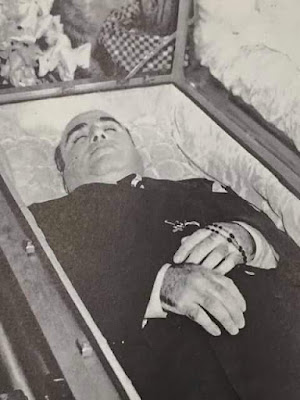

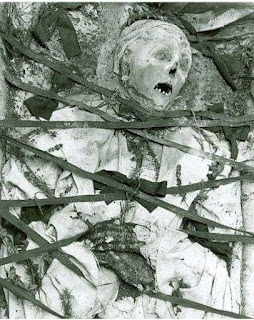
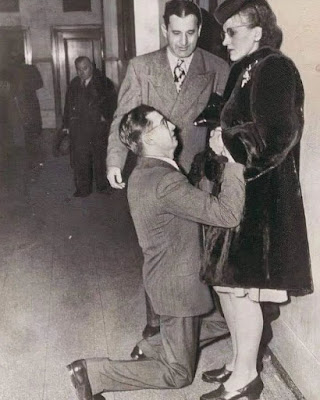
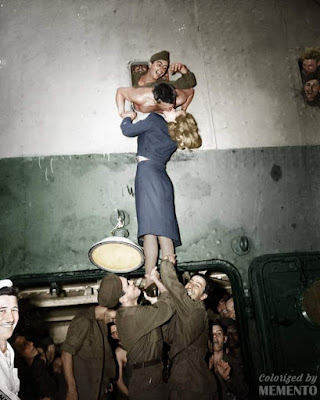


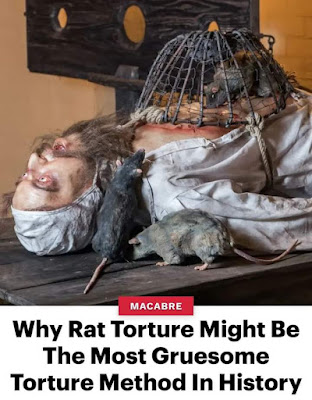

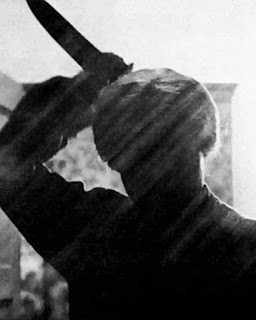

Comments
Post a Comment